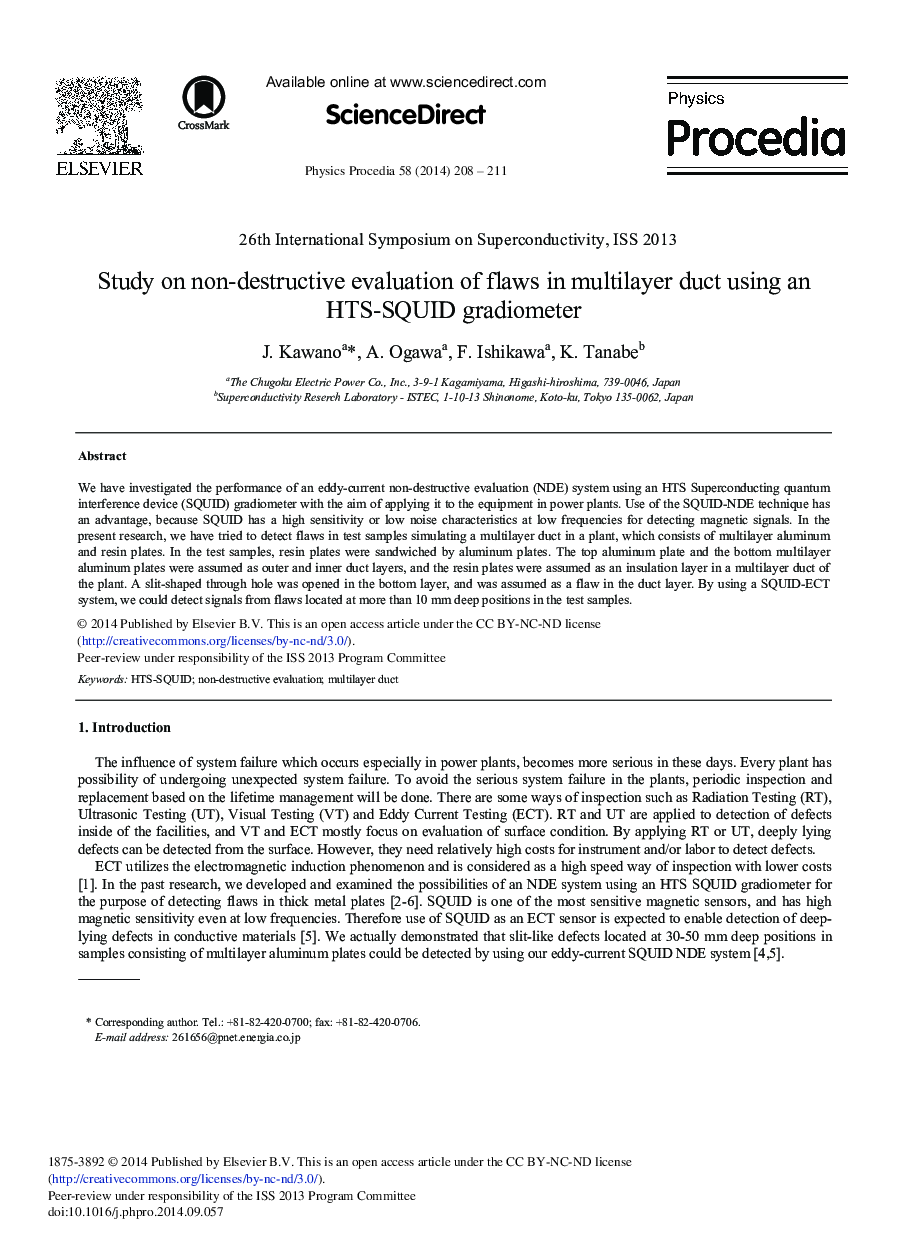| Article ID | Journal | Published Year | Pages | File Type |
|---|---|---|---|---|
| 1874585 | Physics Procedia | 2014 | 4 Pages |
We have investigated the performance of an eddy-current non-destructive evaluation (NDE) system using an HTS Superconducting quantum interference device (SQUID) gradiometer with the aim of applying it to the equipment in power plants. Use of the SQUID-NDE technique has an advantage, because SQUID has a high sensitivity or low noise characteristics at low frequencies for detecting magnetic signals. In the present research, we have tried to detect flaws in test samples simulating a multilayer duct in a plant, which consists of multilayer aluminum and resin plates. In the test samples, resin plates were sandwiched by aluminum plates. The top aluminum plate and the bottom multilayer aluminum plates were assumed as outer and inner duct layers, and the resin plates were assumed as an insulation layer in a multilayer duct of the plant. A slit-shaped through hole was opened in the bottom layer, and was assumed as a flaw in the duct layer. By using a SQUID-ECT system, we could detect signals from flaws located at more than 10 mm deep positions in the test samples.
